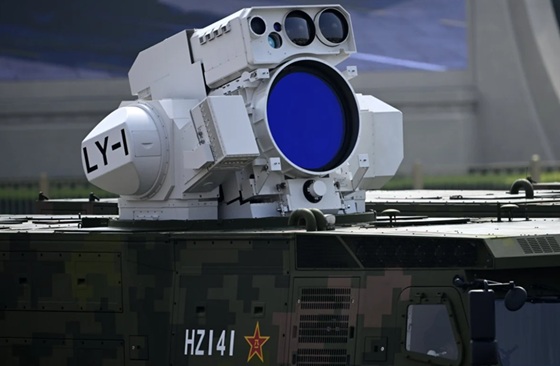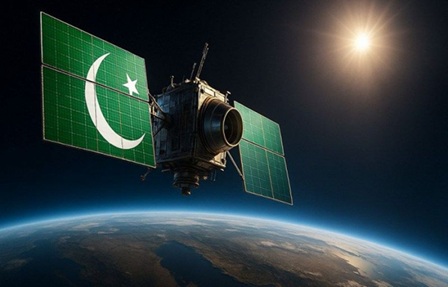In a bold move signaling its intent to keep pace with the evolving landscape of modern warfare, Pakistan has expressed keen interest in acquiring advanced Chinese laser weapons. This development, announced on September 23, 2025, during the high-profile Xiangshan Forum in Beijing, underscores Pakistan’s ambition to bolster its defense capabilities with cutting-edge directed-energy systems. Vice-Admiral (Retd.) Ahmed Saeed, president of Pakistan’s National Institute of Maritime Affairs, articulated this vision, stating, “In the coming days, high-energy directed weapons will be more prominent… Pakistan would love to see some integration [with China] into this area.”
As the global arms race shifts toward non-kinetic technologies, this partnership could redefine South Asian security dynamics, strengthen the Sino-Pakistani alliance, and reshape regional deterrence strategies.
The Rise of Directed-Energy Weapons
Directed-energy weapons (DEWs), such as high-energy lasers and microwave systems, represent a paradigm shift in military technology. Unlike traditional munitions, DEWs deliver precise, high-speed energy beams to neutralize threats like drones, missiles, or sensors at a fraction of the cost of conventional interceptors. Their “ammunition” is limited only by power supply, offering near-infinite shots and unparalleled cost-efficiency. China, a global leader in DEW development, has fielded systems that are both operationally mature and export-ready, positioning it as a key supplier for allies like Pakistan.
The systems drawing Pakistan’s attention include:
1. LY-1 Shipborne Laser:
Unveiled during China’s September 2025 military parade commemorating the 80th anniversary of victory over Japan in World War II, the LY-1 is a naval directed-energy weapon designed for anti-drone and anti-sensor roles. Capable of blinding optics or disabling electronics, it offers a stealthy, non-kinetic defense option for naval vessels. While specifics on its deployment aboard Chinese ships remain classified, its export potential has sparked interest in maritime-focused nations like Pakistan.
2. Silent Hunter:
A vehicle-mounted laser system, the Silent Hunter is optimized for countering unmanned aerial vehicles (UAVs) and lightly armored targets. Observed on China’s Type 071 amphibious ships, it demonstrates versatility across naval and land-based platforms. Its compact design and high precision make it an attractive option for Pakistan’s diverse operational needs. These systems align with Pakistan’s ongoing defense modernization, which has long relied on Chinese platforms like the JF-17 Thunder fighter, HQ-9 surface-to-air missiles, and Z-10ME attack helicopters. The potential integration of laser weapons marks a new chapter in this partnership, driven by the China-Pakistan Economic Corridor (CPEC) and shared strategic interests.
Why Laser Weapons Matter for Pakistan
Pakistan’s interest in Chinese laser weapons is not merely a technological upgrade but a strategic necessity, driven by regional threats and global trends in warfare. Here’s why this move is significant:
1. Countering Asymmetric Threats
South Asia’s security environment is increasingly defined by asymmetric threats, particularly drones and precision-guided munitions. Pakistan has faced repeated drone incursions along its border with India, with incidents reported as recently as May 2025. Traditional air defense systems, while effective, are costly and logistically demanding. Laser weapons like the LY-1 and Silent Hunter offer a low-cost, high-efficiency solution, capable of neutralizing swarms of drones or blinding surveillance systems without depleting missile stocks. For Pakistan’s navy, operating in critical maritime chokepoints like the Strait of Hormuz or the Arabian Sea, these systems could safeguard vital trade routes and energy supplies.
2. Balancing India’s Military Advancements
The India-Pakistan rivalry remains a cornerstone of South Asian geopolitics. India’s Defense Research and Development Organization (DRDO) has been developing its own directed-energy weapons, though these lag behind China’s in power output and operational readiness. By acquiring Chinese lasers, Pakistan could gain an edge in non-kinetic warfare, enhancing its deterrence posture. For instance, lasers could disrupt India’s ISR (intelligence, surveillance, and reconnaissance) assets or counter emerging hypersonic threats, complementing Pakistan’s tactical nuclear capabilities and conventional forces.
3. Cost-Effective Defense
The economic advantage of laser weapons cannot be overstated. A single missile intercept can cost millions, whereas a laser shot costs mere dollars in energy. For Pakistan, operating under budgetary constraints and reduced U.S. military aid since 2018, this cost-efficiency is a game-changer. It allows sustained defense operations without the logistical burden of munitions resupply, particularly in prolonged low-intensity conflicts.
4. Geopolitical Alignment with China
Pakistan’s pursuit of Chinese laser weapons deepens the “all-weather” Sino-Pakistani alliance, a counterweight to the U.S.-India strategic partnership. This collaboration could accelerate technology transfers, mirroring past nuclear and missile cooperation, and position China as Pakistan’s primary arms supplier. For China, exporting DEWs to Pakistan serves dual purposes: it strengthens a key ally and provides a testing ground for its systems in real-world scenarios, enhancing their global marketability.
Technical and Strategic Considerations
While the potential of laser weapons is immense, their integration into Pakistan’s arsenal comes with challenges and opportunities. Below is a detailed breakdown:
Aspect | Advantages | Challenges |
|---|---|---|
Cost & Logistics | Near-infinite shots; no need for physical munitions | High energy demands require robust power infrastructure |
Range & Precision | Effective up to 3-5 km for anti-drone roles; silent and invisible beams | Atmospheric conditions (e.g., dust, fog) can reduce effectiveness |
Integration | Compatible with existing platforms like ships and vehicles; complements HQ-16 SAMs | Requires Chinese training and technical support, increasing dependency |
Strategic Impact | Enhances deterrence; counters asymmetric threats | Risks escalating regional arms race; potential export controls |
Pakistan’s military would need to invest in power generation and cooling systems to support DEWs, particularly in harsh environments like the Thar Desert or coastal regions. Additionally, reliance on Chinese expertise could deepen strategic dependence, a concern echoed by some analysts on X, who argue Pakistan should prioritize domestic R&D.
Regional and Global Implications
Pakistan’s potential acquisition of Chinese laser weapons has far-reaching implications:
1. South Asian Arms Race:
As India accelerates its own DEW programs, Pakistan’s move could trigger a tit-for-tat escalation, raising tensions in an already volatile region. The May 2025 air clashes, where Chinese-supplied PL-15 missiles were used, highlight the stakes of technological one-upmanship.
2. Indo-Pacific Security:
The Sino-Pakistani partnership, bolstered by laser weapons, could alter power dynamics in the Indo-Pacific, challenging U.S. and Indian influence. It may also prompt other regional players, like Iran or Turkey, to seek similar systems from China.
3. China’s Arms Export Ambitions:
China’s willingness to export DEWs positions it as a leader in the global arms market, challenging Western dominance. Pakistan’s adoption could pave the way for broader exports to Middle Eastern or African nations.
Public and Expert Reactions
The announcement has sparked lively debate on platforms like X, where users have both praised and critiqued Pakistan’s strategy. Posts from accounts like @RedMarkar highlighted Saeed’s remarks, framing them as part of a global shift toward directed-energy systems. Others, like @DefStratPK, criticized Pakistan’s reliance on foreign imports, arguing that funds should be redirected to indigenous programs like the NESCOM missile projects. Defense blogs, note that while no formal deal has been signed, discussions are likely advancing under CPEC’s security cooperation framework.
The Road Ahead
As of September 23, 2025, Pakistan’s interest in Chinese laser weapons remains at the exploratory stage, with no confirmed contracts or delivery timelines. However, the strategic intent is clear: Pakistan seeks to modernize its arsenal, counter regional threats, and deepen ties with China. The integration of systems like the LY-1 or Silent Hunter would mark a significant leap, positioning Pakistan as an early adopter of next-generation warfare technologies in South Asia. To realize this ambition, Pakistan must navigate technical challenges, secure funding, and address geopolitical risks. Meanwhile, the world watches closely as the Sino-Pakistani alliance takes another step toward reshaping the future of conflict in the region and beyond.
Discover more from Defence Talks | Defense News Hub, Military Updates, Security Insights
Subscribe to get the latest posts sent to your email.





